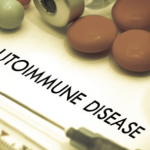
Subfertility is a big problem for women with RA.
Image Credit: phugunfire/shutterstock.com
ROME, Italy—In what researchers say is the first study evaluating cardiac magnetic resonance (CMR) findings in early rheumatoid arthritis (ERA) patients, cardiovascular abnormalities were significantly worse in patients with ERA than in matched, healthy controls. The study results were presented at EULAR 2015, the annual congress of the European League Against Rheumatism (EULAR).
Cardiovascular Concerns
Researchers at the University of Leeds scanned 66 patients with ERA, as well as 30 healthy controls matched to age, gender and blood pressure.1 The ERA patients had symptoms for no more than a year, never had treatment with disease-modifying therapy or corticosteroids and had a DAS28-ESR score of 3.2 or higher. Patients were 49 years old, on average, and the controls were 50.

Dr. Erhayiem
There was significantly worse arterial stiffness in patients with ERA, as measured by aortic distensibility (p=0.001), said Bara Erhayiem, BMBS, a research fellow in cardiovascular magnetic resonance imaging at the University of Leeds. Researchers also found that there was increased myocardial extracellular space in ERA and decreased LV mass (both p<0.01). There was a trend for lower ventricular end-diastolic volumes in ERA (p=0.047). Evidence of non-ischemic focal fibrosis was seen in five early RA patients and in just one control.
Cardiovascular disease is the most common cause of premature mortality in RA patients. These findings suggest that the evidence of cardiovascular decline exists earlier than previously known.
“The findings suggest higher cardiovascular risk at the time of diagnosis,” Dr. Erhayiem said. “Further investigation is needed to clarify the clinical implications and whether there is scope to modify [cardiovascular] outcome with effective RA therapy.”
Biologics
In another study, researchers using a national database in the U.S. found that patients on biologic therapy experienced only “modest” improvements in patient-reported outcomes compared with those reported before the biologic therapy was begun, said Leslie Harrold, MD, MPH, a rheumatologist and associate professor of orthopedics and physical rehabilitation at the University of Massachusetts Medical School.2

Dr. Harrold
Data were pulled from the Corrona registry, a database that includes information on more than 40,000 patients with RA. Researchers focused on 3,776 patients who were started on their first biologic therapy—between 2005 and 2014—and had a six- or 12-month follow-up.
The patients reported substantial symptoms even before biologic therapy, with an average score of 44 on the 0 to 100 scale in global assessment; an average score of 45 in pain; and an average score of 47 in fatigue. Patients also experienced an average of 2 hours of morning stiffness.
According to EuroQol (EQ5D) questionnaire results, 62% of patients had difficulty with walking, 35% with self-care and 69% with their usual activities.
After being started on biologic therapy—abatacept, a TNF blocker, a non-TNFi biologic or a small molecule treatment—patients reported average decreases of 5 to 9 points in global assessment, fatigue and pain.
In terms of morning stiffness, more than 20% of patients experienced no change, about 20% had their stiffness get worse, and just 30% experienced reductions of 60 minutes or more in their morning stiffness after 12 months.
Fewer than half of patients showed any improvement in their EQ5D domain scores.
More than a third of patients had improvements in modified ACR20 scores at six and 12 months, Dr. Harrold said. Next, researchers plan to adjust for baseline characteristics and look at each therapy type separately, she said.
“Clearly there was reduced quality of life at the time of biologic initiation, and I think new treatment strategies are needed to try to impact that,” she said. “We thought that the improvement in patient-reported outcomes in this sample was modest. And we really need more information on patient-reported outcomes to help guide our conversations with patients on why we’re using these therapies and what the expected benefit will be.”
Fertility
Results from another study showed that more than 40% of women who have rheumatoid arthritis and are subfertile get a diagnosis of “unexplained subfertility” from their gynecologist. The findings in the national cohort study came from survey results and medical file reviews for 178 women who were pregnant or had tried to conceive, said Jenny Brouwer, MD, a fertility physician and PhD candidate in rheumatology and reproductive medicine at Erasmus Medical Center in Rotterdam, The Netherlands.
Subfertility is a big problem among women with RA, with about four out of 10 trying to get pregnant needing at least 12 months to do so or never getting pregnant at all. Active disease and anti-rheumatic treatment have been linked with subfertility.

Dr. Brouwer
In the study, researchers at Erasmus conducted a survey of 178 women with RA.3 They found that 46% had had at least one subfertile episode, and that 56% of these women were subfertile through their entire reproductive periods. Fifty percent of the women who were subfertile had conceived at least once with the help of fertility treatment, and those pregnancies accounted for just 17% of all pregnancies in the cohort.
The diagnoses of subfertility included 41% that were unexplained, 27% anovulation, 16% male subfertility and 6% endometriosis.
“Unexplained subfertility and anovulation are the most common diagnoses in subfertile female RA patients,” Dr. Brouwer said. Unexplained subfertility especially “is diagnosed more often than in the general subfertile population. Therefore, it is likely that RA-related factors, such as severity of the disease, inflammation, and the use of anti-rheumatic drugs, are involved in subfertility in women with RA.”
Thomas R. Collins is a freelance medical writer based in Florida.
References
- Erhayiem B, McDiarmid A, Swoboda P, et al. Treatment-naïve, early rheumatoid arthritis patients demonstrate vascular and myocardial abnormalities on cardiac MRI. Abstract OP0163. Presented at EULAR, June 12, 2015, Rome, Italy.
- Harrold LR, Gandhi, KK, Etzel CJ, et al. The impact of rheumatoid arthritis on patient reported outcomes and quality of life prior to biologic initiation. Abstract OP0160. Presented at EULAR, June 12, 2015, Rome, Italy.
- Brouwer J, Fleurbaaij R, Hazes JM et al. Subfertility in female rheumatoid arthritis patients is often unexplained or caused by anovulation. Abstract OP0165. Presented at EULAR, June 12, 2015, Rome, Italy.


